Invasive plants
Invasive species: In the broadest sense, this is merely a non–indigenous species: a species from afar which has entered the region. However, most people use the term in the narrow sense of an interloper: it is not only here, but is in some sense harmful.
There are considerable risks to the introduction of alien (non–native) species into a region. Typically such species lack predators in their new environment and so outcompete native species, sometimes eliminating them. Not only is this bad for the native species, it decreases diversity. Alas, too many horror stories have resulted from such introductions, whether purposeful or inadvertent.
The situation is less transparent when dealing with introductions made in the past. If the alien species has become reasonably well established (possibly despite best efforts), should one continue eradication efforts, or is the better strategy to wait as predators adapt and a balance is reestablished? Possibly, but this is not what seems to happen. The campaign against invasive species seems to have transformed itself into a movement, and one supported by legislation and government grants. The movement seems to share thought patterns with the buy–local campaign, and the abiding suspicion that the folks in the next valley have hair on the soles of their feet.
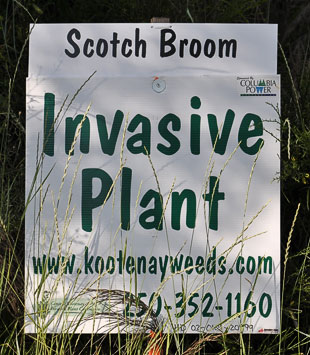 This invasive sign (Committo subcribo) was planted by the Central Kootenay Invasive Plant Committee.
This invasive sign (Committo subcribo) was planted by the Central Kootenay Invasive Plant Committee.
Despite the (somewhat) facetious tone of the previous paragraph, there is much about the cause which I support. The content of this website (kootenay-lake.ca) is stridently local. If the bird, bear, or bug were photographed in Alberta, or even at the Coast, it will not appear here. In my yard, I encourage natives and excise invaders.
Yet, there is something remarkably disingenuous about the philosophical underpinnings of the campaign to irradiate invasive species. After all, the campaigners, themselves, are members of an invasive species—and we need not look far for evidence of the considerable harm that this particular invader has inflicted upon indigenous ones.
Further, there is often a financial, rather than philosophical, motive for opposing invasive species: we are assured that some of them interfere with agriculture or husbandry. But, the crops we plant and the cattle we nurture are themselves invasive species and no one doubts the substantial damage they do to the scarified and cloistered land we reserve for them. Do you suppose that it really is the damage to native species which bothers us, rather than a threat to our vested interests? We pick and choose our evil species. One suspects that even the expressed concern for damage to wildlife is just lip service. Consider the concern we have for our mountain caribou when the preservation of this native species is placed alongside someone’s desire to use the same space to make money.
The Law: “Every occupier shall control, in accordance with the regulations, noxious weeds growing or located on land and premises, and on any other property located on land and premises, occupied by him.”
This bizarre bit of buck–passing legislation transforms virtually every individual and organization in rural BC into a scofflaw.
The disingenuous approach to the conflict between introduced and native species is never so transparent as during the annual hand wringing in Nelson over skunks. Now, skunks are indigenous, while their nemeses, dogs, are invasive. So in this conflict, which species does the Nelson City Council arrange to deport? Hmm…, our actions belie our rhetoric.
Certainly, much harm has been caused to natives by the introduction of alien species, whether it was raccoons to the Queen Charlotte Islands, mysid shrimp to Kootenay Lake, or dogs to Nelson. I will continue to discourage all manner of alien species from seeking solace in my yard (excepting humans). Nevertheless, the invasive–species rhetoric often offers rather thin gruel.
Although the species below might seem lovely, they have evoked someone’s displeasure, and have been listed as bad.
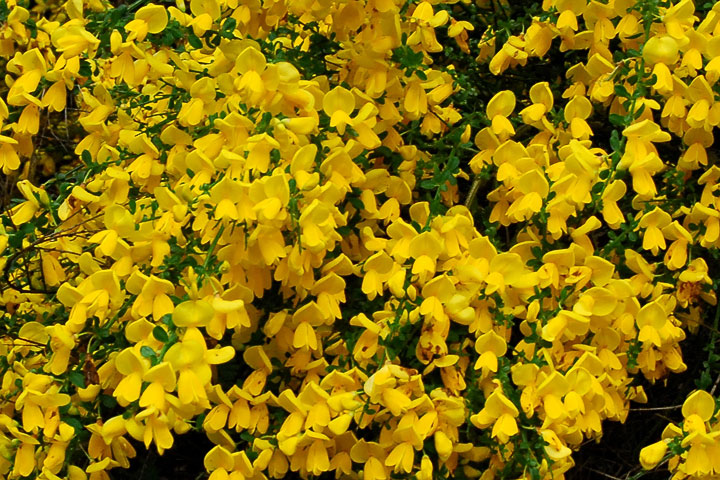 Scotch broom (Cytisus scopaius) is a frequent roadside adornment around the Lake. Indeed, if favours such disturbed areas where it can outcompete native species.
Scotch broom (Cytisus scopaius) is a frequent roadside adornment around the Lake. Indeed, if favours such disturbed areas where it can outcompete native species.
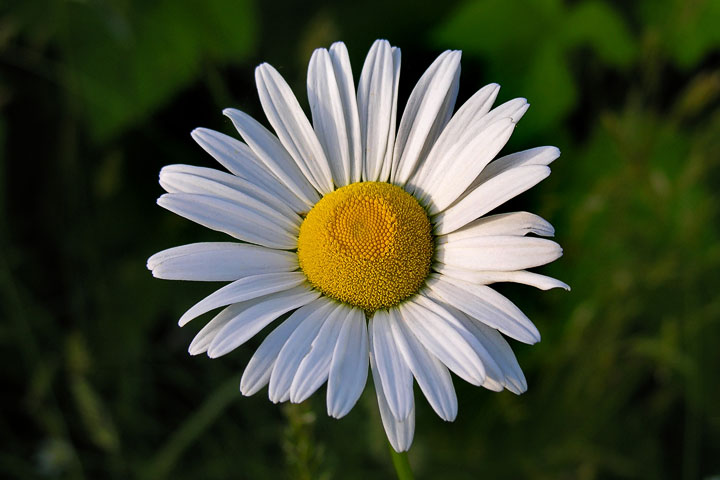 The oxeye dasy (Leucanthemum vulgare) adorns many fields. Weeds BC tells us, “The plant is unpalatable to cattle. Dense infestations can reduce forage for livestock and wildlife.” In other words, this invasive plant species is noxious because it interferes with an invasive species of cattle. That’s a tad ironic. As for wildlife, the primary local browser, white–tailed deer, seems to be prospering.
The oxeye dasy (Leucanthemum vulgare) adorns many fields. Weeds BC tells us, “The plant is unpalatable to cattle. Dense infestations can reduce forage for livestock and wildlife.” In other words, this invasive plant species is noxious because it interferes with an invasive species of cattle. That’s a tad ironic. As for wildlife, the primary local browser, white–tailed deer, seems to be prospering.
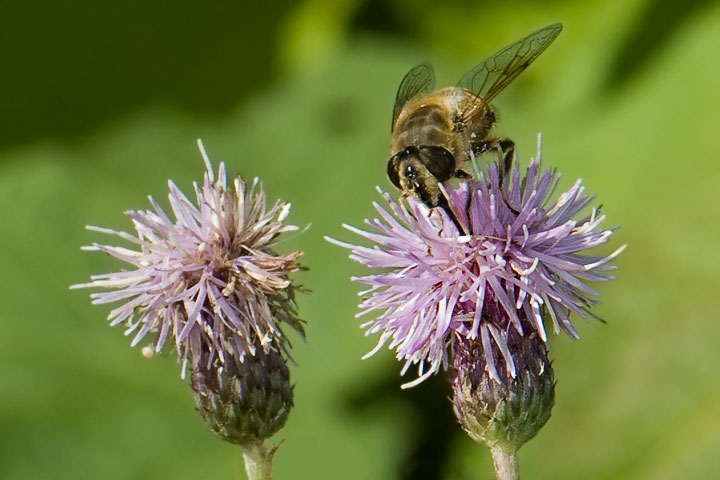 The spotted knapweed (Centaurea biebersteinii) seems to be another plant without favour among those raising cattle. However, it is clear that this hoverfly finds it acceptable.
The spotted knapweed (Centaurea biebersteinii) seems to be another plant without favour among those raising cattle. However, it is clear that this hoverfly finds it acceptable.
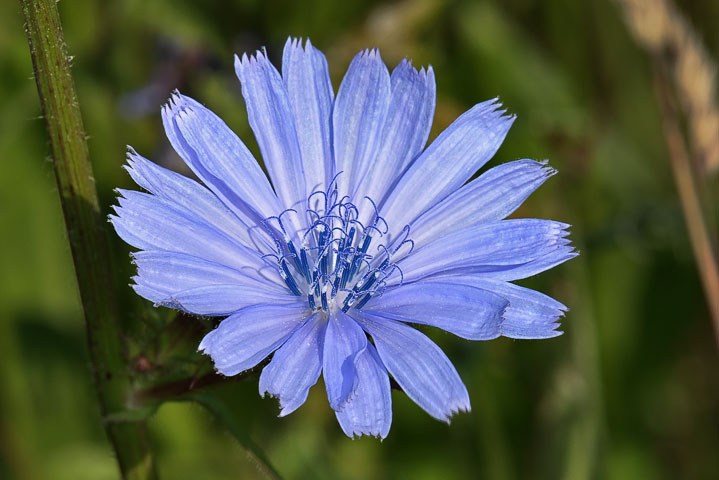 As the chicory (Cichorium intybus) blooms in July, a lakeside road becomes edged in glorious blue. At this time, it is difficult to take seriously the concerns of Weeds BC that cows which graze there may deliver bitter milk.
As the chicory (Cichorium intybus) blooms in July, a lakeside road becomes edged in glorious blue. At this time, it is difficult to take seriously the concerns of Weeds BC that cows which graze there may deliver bitter milk.
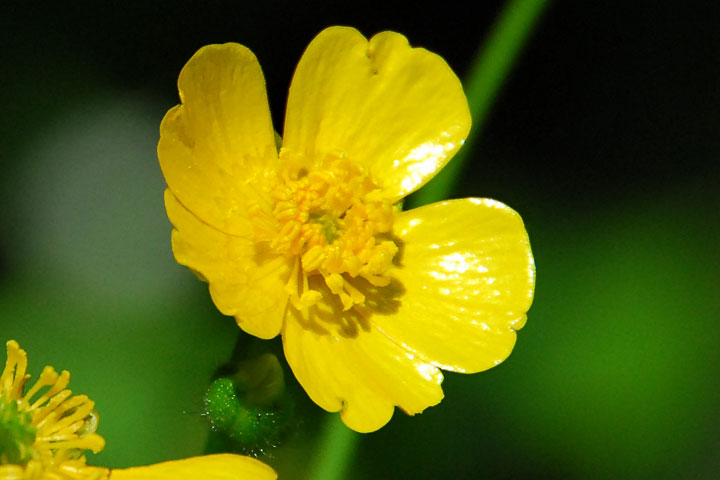 The creeping buttercup (Ranunculus repens) can be seen almost anywhere. It is classified as an invasive species. It contains a toxin which can cause pain to another invasive species: cattle.
The creeping buttercup (Ranunculus repens) can be seen almost anywhere. It is classified as an invasive species. It contains a toxin which can cause pain to another invasive species: cattle.
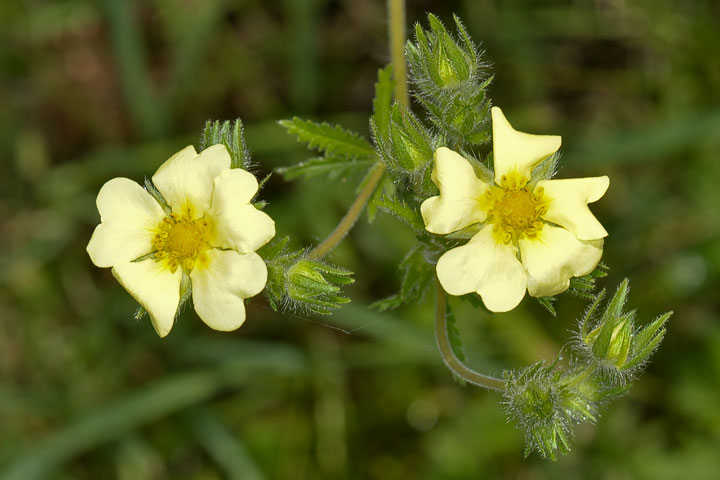 Weeds BC tells us that cattle don’t like the taste of the sulphur cinquefoil (Potentilla recta).
Weeds BC tells us that cattle don’t like the taste of the sulphur cinquefoil (Potentilla recta).
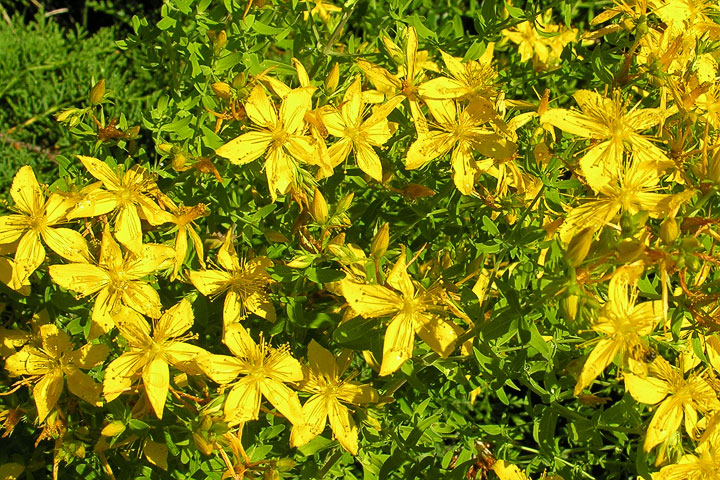 This St. John’s wort (Hypericum perforatum) was found along the shore of the West Arm. Weeds BC tells us, that it “invades grazed and disturbed lands. In dense stands, it displaces native plant species and reduces livestock and wildlife forage.” That is probably not a problem in this case.
This St. John’s wort (Hypericum perforatum) was found along the shore of the West Arm. Weeds BC tells us, that it “invades grazed and disturbed lands. In dense stands, it displaces native plant species and reduces livestock and wildlife forage.” That is probably not a problem in this case.
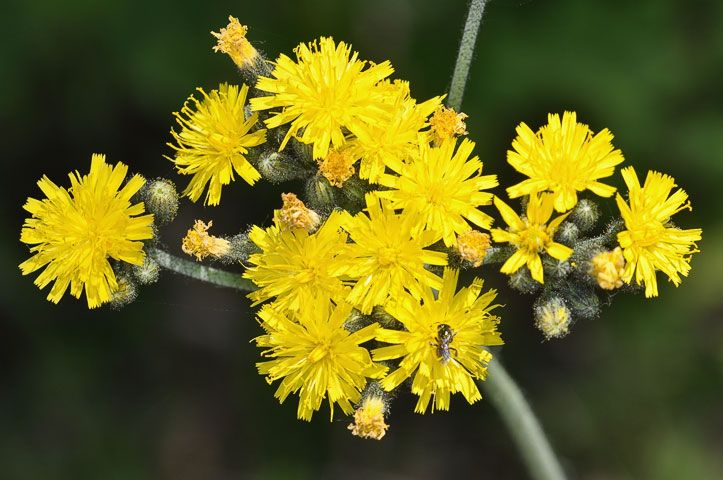 The yellow hawkweed (Hieracium pratense) doesn’t seem as common as the orange hawkweed. It isn’t mentioned in the Weed Control Act, but is in the Forest and Range Practices Act.
The yellow hawkweed (Hieracium pratense) doesn’t seem as common as the orange hawkweed. It isn’t mentioned in the Weed Control Act, but is in the Forest and Range Practices Act.
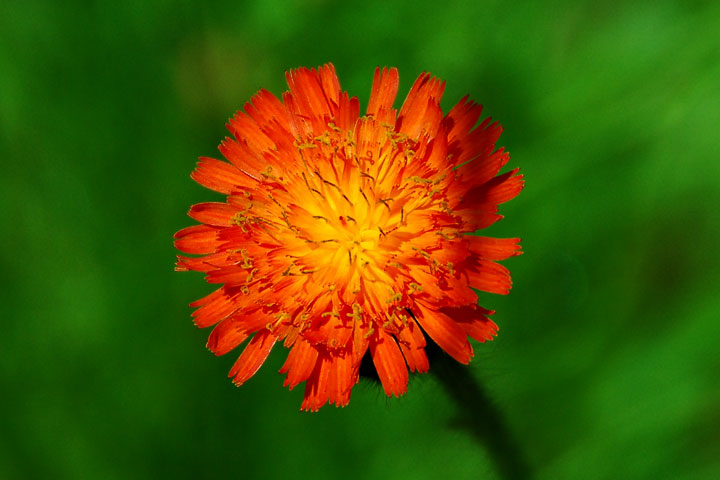 The orange hawkweed (Hieracium aurantiacum) springs up after the first mowing. Weeds BC tells us, that “its full impact on agricultural crops is as yet unknown in British Columbia, but it does replace forage plants on pastures. Its rapid spread is a cause for concern.”
The orange hawkweed (Hieracium aurantiacum) springs up after the first mowing. Weeds BC tells us, that “its full impact on agricultural crops is as yet unknown in British Columbia, but it does replace forage plants on pastures. Its rapid spread is a cause for concern.”
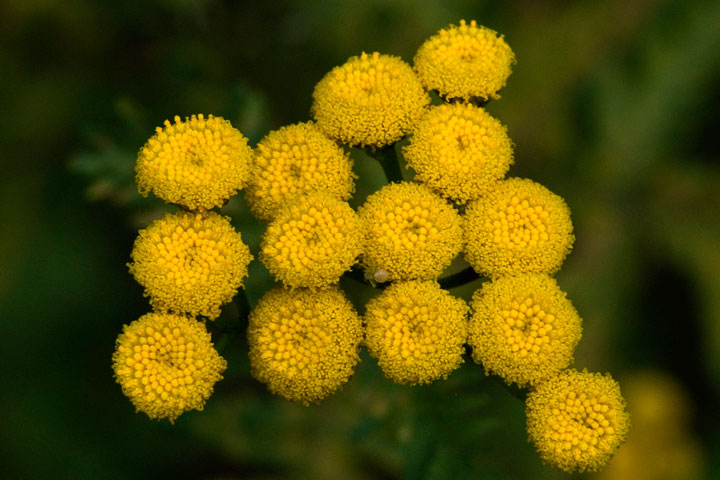 The common tansy (Tanacetum vulgare) has button–like yellow flowers. Weeds BC suggests that it may be an undesirable forage for livestock.
The common tansy (Tanacetum vulgare) has button–like yellow flowers. Weeds BC suggests that it may be an undesirable forage for livestock.
Information on invasive (plant) species in this area is offered by the
Central Kootenay Invasive Plant Committee.
![]()